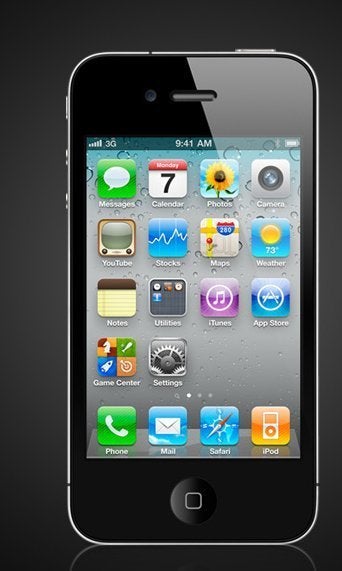
I was destined to love words. By three years old, I was reading books, magazines and street signs -- anything I could see with letters on them. But a week in Hong Kong stumped me.
"Lola," I said, using the Tagalog word to address my grandmother, "Why can't I read any of these signs?"
And so began a lifelong journey to figure it all out.
Don't be thrown by my name: I'm as American as General Tso's Chicken, a "Chinese" treat rarely found in Asia. My American credentials include a passport, a knack for infusing "like" and "you know" into every other word and fluency in only one language.
I began studying Chinese in university. After casually picking up a little Spanish from my Los Angeles friends, I thought Mandarin might be just as easy to acquire. Many years of intensive study later I still struggle with the language, though that didn't stop me from jumping at the chance to move to Beijing for a new work opportunity.
These days, I'd be able to tell my grandmother what a few of the street signs say, but not all of them. I can slowly skim a Weibo feed, but I still get tongue-tied trying to order beef and broccoli. Thank goodness for my iPhone for getting me through the country of my ancestral heritage.
Moving to China soon? Or maybe just Monterey Park? If 听不懂 ("I can hear you but I haven't a clue what you're saying") is part of your daily vocabulary, you'll need some help. Here are five (free!) iPhone apps for native English speakers specifically making their way through the Middle Kingdom. Each of these feature intuitive user interface design for getting through sticky situations with a quick swipe, pinch and a little dash of good fortune:
My Chinese Library: Every world traveler knows that whipping out that phrase book is a sure sign of defeat. But sometimes you just can't remember how to ask a certain question, and the iPhone makes looking things up at least look a little cooler. The quickest way to find that essential traveler's phrase is through a digital phrasebook like My Chinese Library. With built-in travel essentials, you simply click the phrase you need, and a native speaker says it out loud. You can even use the app to select from possible replies. The app itself is free, but a few extra dollars gets you access to a more complete library of phrases.
DianHua Dictionary: For more robust situations, and especially for those eager to learn the language rather than simply get by, a dictionary is key. For Chinese language learners of yore, English-Chinese dictionaries used to entail painstakingly looking up characters by radical or stroke count and thumbing through page by page till you find the word you're looking for. Now, thanks to the touch screen input system, all you need to do is write in the character and look it up directly. As a special treat, a quick click of the + button lets you add your new vocabulary to the built-in flash card system.
Other popular dictionary apps include Ktdict C-E, QingWen, and the highly-popular Pleco. For a small extra fee, this latter uses On Camera Recognition to identify characters placed in front of the camera.
mPassport: Getting sick or injured is never fun, but it's especially stressful in a foreign country where you might not speak the language well enough to describe your needs. The mPassport series, put together by HTH Worldwide, lists out English-speaking services by specialty and location, complete with a GPS function for locating the nearest provider.
GuidePal Beijing: Currently available for a slew of mainland Chinese cities, including Beijing, Shanghai and Guangzhou, GuidePal has a useful, quick list of local highlights. Fully offline, you simply need to click a button to see the location, and a detailed map appears using OpenStreetMap software. The app shows the intersection in pinyin and even highlights the closet subway stop. Speaking of which, Beijing Subway Map simply does what it's named for, in both Chinese characters and pinyin. Perfect for a quick reference point.
If your Mandarin is pretty good, be sure to check out 大众点评, something like the Chinese version of Yelp, and 爱帮公交, which maps out public transit routes between points A and B.
ChinaDaily and the South China Morning Post: If you're like me, you check some combination of news apps regularly. Yes, Western media apps cover Asia extensively. But while you're traveling through China, you'll want feature pieces closer to the source to help make sense of what your Chinese friends are chatting about at the water cooler (or the tea boiler, as it were). Both ChinaDaily and the South China Morning Post have extensive English-language news and feature pieces. ChinaDaily boasts the largest circulation of any English-language newspaper in the Middle Kingdom, while the South China Morning Post, published out of Hong Kong, presents a non-Mainland perspective on Chinese issues. With time, we should be seeing more English-language China-focused media appearing on the iPhone.
And a special bonus:
Mandarin Quotes from Tang Poems: Impress your Chinese friends with your extensive knowledge of Tang Dynasty poetry. Poetry has traditionally played an important role in Chinese society, and today you can still find its bits and pieces referenced in daily speech. Although the design is a little cheesy, this app provides a broad collection of 古诗, or Classical Chinese poems. It organizes the poems by emotion, from sadness to encouragement, along with a line-by-line translation and interpretation of each poem.
Know of other great iPhone apps, free or otherwise, for native English speakers getting through China? Let me know. Special thanks to André Holthe and Aaron Gans for contributing to my research.
Originally from Los Angeles and Manila, artist and designer An Xiao is currently based in Beijing. She blogs regularly at http://www.anxiaostudio.com.